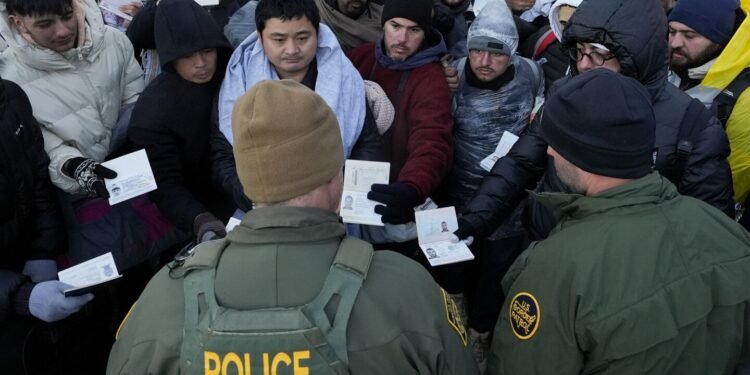WASHINGTON (news agencies) — The number of arrests for illegally crossing the U.S. southern border with Mexico nudged upward February over the previous month. But at a time when immigration is increasingly a concern for voters, the numbers were still among the lowest of Joe Biden’s presidency.
According to figures from Customs and Border Protection, Border Patrol agents made 140,644 arrests of people attempting to enter the country between the legal border crossing points during February.
The figures are part of a range of data related to immigration, trade and fentanyl seizures that is released monthly by CBP. The immigration-related figures are a closely watched metric at a time of intense political scrutiny over who is entering the country and whether the Biden administration has a handle on the issue.
Republicans, led by former President Donald Trump, the presumptive Republican nominee for president, have charged that Biden’s policies have encouraged migrants to attempt to come to the U.S. and that the border is out of control. The Biden administration counters by saying Republicans failed to work with Democrats to fund a key border security bill and arguing that what is happening on the southern border is part of a worldwide phenomenon of more people fleeing their homes to seek safety.
The numbers come after a December that saw the Border Patrol tally 249,785 arrests — a record high that increased tensions over immigration — before plunging in January.
Officials have credited enforcement efforts by Mexico as well as seasonal fluctuations that affect when and where migrants attempt to cross the border for the drop from December to January and February.
Homeland Security Secretary Alejandro Mayorkas said during a Feb. 29 trip to Brownsville, Texas, with Biden that the “primary reason is the enhanced enforcement efforts on the part of the Mexican government.” But he said encounters remained up in Arizona in part because Sonora, which is the Mexican state directly south of Arizona, is difficult to patrol.
In February, the Tucson sector in Arizona was by far the busiest region for migrant crossings between the ports of entry, followed by San Diego and El Paso, Texas.



 Pakistan Rupee Exchange Rate
Pakistan Rupee Exchange Rate





